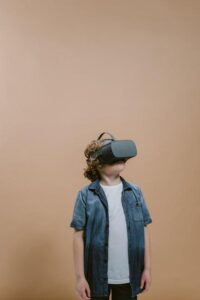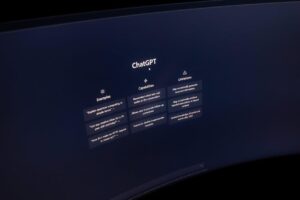Designing Always-On Campaigns for Continuous Engagement
In today’s fast-paced digital world, brands can’t afford to “switch off” their marketing efforts. Consumers expect timely, relevant communication around the clock, across multiple channels. This is where always-on campaigns come into play – a strategic approach designed to keep your audience continuously engaged, build brand loyalty, and maximize ROI. In this comprehensive guide, we’ll dive deep into what always-on campaigns are, their benefits, and practical tips to create campaigns that never sleep.
What Are Always-On Campaigns?
Always-on campaigns are marketing initiatives that run consistently without interruption, rather than in short bursts or limited-time promotions. They are intended to maintain a constant presence in your customers’ lives, ensuring your brand stays top of mind day and night. These campaigns typically leverage automation, real-time data, and omnichannel communication to provide relevant, personalized content continuously.
Key Features of Always-On Campaigns
- Continuous activity: Campaigns never fully pause and provide steady content or messaging.
- Data-driven personalization: Real-time insights enable tailored audience experiences.
- Multichannel engagement: Utilizing email, social media, paid ads, search, and more to reach prospects everywhere.
- Automation tools: Streamline messaging delivery and frequency management.
Benefits of Designing Always-On Campaigns
Implementing always-on marketing campaigns offers numerous advantages that drive consistent growth and engagement for businesses of all sizes.
- Improved brand awareness: Steady exposure helps keep your brand visible in a crowded marketplace.
- Enhanced customer retention: Ongoing communication nurtures relationships and fosters loyalty.
- Smarter resource utilization: Rather than burst campaigns, resources are spread effectively with optimized ROI.
- Real-time responsiveness: React quickly to market changes or customer behavior shifts.
- Better performance analytics: Continuous campaigns generate more data for fine-tuning strategies.
How to Design an Effective Always-On Campaign
Building an always-on campaign requires thoughtful planning, the right tools, and strategic execution. Below is a step-by-step approach to designing campaigns that deliver continuous engagement.
1. Identify Your Objectives and KPIs
Clarify what you want your always-on campaign to achieve, such as increasing website visits, capturing leads, boosting sales, or growing your social media community. Establish measurable KPIs like click-through rates, conversion rates, or engagement scores to track success.
2. Segment and Understand Your Audience
Use data insights to create detailed personas and segment your audience based on behavior, preferences, demographics, and buyer journey stages. Tailored messaging increases relevance and engagement.
3. Choose the Right Channels
Always-on campaigns thrive on multi-channel integration. Common channels include:
- Email marketing
- Social media advertising (Facebook, Instagram, LinkedIn)
- Search engine marketing (Google Ads, Bing Ads)
- Content marketing (blogs, videos, podcasts)
- Retargeting ads
4. Develop a Content Calendar with Evergreen and Dynamic Content
Balance evergreen content that remains relevant over time with dynamic content that adapts based on real-time data or trending topics. This ensures your campaign feels fresh while conserving resources.
5. Leverage Automation and AI Tools
Automate campaign touchpoints such as personalized emails, social media posts, and ad placements. AI-driven personalization can further enhance message relevance and timing.
6. Monitor, Analyze, and Optimize Continuously
Track KPIs regularly and analyze campaign performance. Use A/B testing to refine messaging and channel strategy for sustained improvements.
Practical Tips for Always-On Campaign Success
- Maintain Consistency: Keep your brand voice unified across all channels and touchpoints.
- Stay Relevant: Use current events, seasons, or customer behavior signals to tailor communications.
- Focus on Customer Experience: Deliver value, not just promotions. Educational and entertaining content fosters connection.
- Segment Messaging: Avoid one-size-fits-all; hyper-target segments with custom content.
- Invest in Technology: Utilize CRM, marketing automation platforms, and analytics tools.
Always-On Campaign Channels Comparison Table
| Channel | Strengths | Best Use Case | Engagement Type |
|---|---|---|---|
| Email Marketing | Personalized, High ROI | Lead nurturing and retention | Direct one-to-one |
| Social Media Ads | Wide Reach, Visual | Brand awareness and product launches | Interactive and visual |
| Search Engine Marketing | Targeted, Intent-based | Driving conversions and traffic | Intent-driven search clicks |
| Content Marketing | Educational, Evergreen | Customer engagement and SEO | Informational and viral |
Case Study: How Company X Leveraged Always-On Campaigns
Background: Company X, an e-commerce apparel brand, struggled with seasonal sales fluctuations and inconsistent customer engagement.
Strategy: They adopted an always-on marketing approach combining email personalization, dynamic social ads, and SEO-driven content marketing throughout the year.
Outcome: Company X saw a 35% increase in monthly website traffic, a 25% lift in email open rates, and a 20% boost in customer retention within six months.
Conclusion
Always-on campaigns represent a paradigm shift in marketing-moving from reactive bursts to proactive, continuous engagement. By blending data-driven insights, multi-channel strategies, and consistent brand storytelling, businesses can build stronger relationships with customers around the clock. Whether you’re a startup or an established enterprise, designing an effective always-on campaign will help you stay relevant, responsive, and competitive in today’s digital marketplace.
Ready to make your marketing work 24/7? Start by defining clear goals, investing in automation tools, and embracing customer-centric, constantly evolving campaigns for sustained success.











